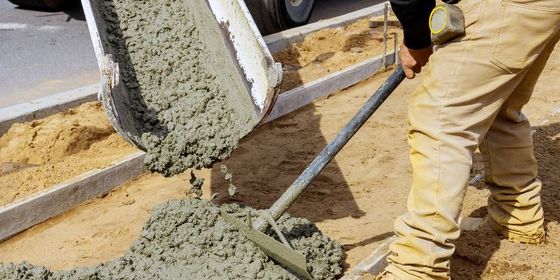Welcome to our comprehensive guide on the Construction Specifications Institute (CSI) Division 06, which focuses on Wood, Plastics, and Composites! In this guide, you’ll gain in-depth knowledge of materials, systems, and best practices when dealing with these three critical categories in construction projects. Our guide aims to become the go-to reference for professionals in the construction industry. From a brief history and overview of the CSI and the MasterFormat to current trends and innovations, our guide covers every aspect of Division 06.
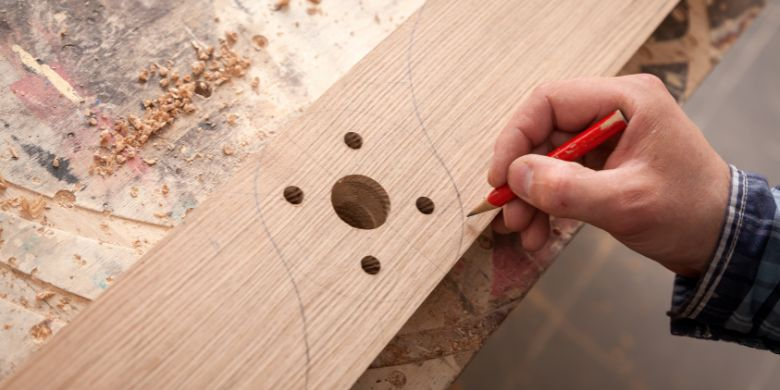
We’ll discuss various subcategories within this division, as well as delve into the characteristics, applications, and advantages of wood, plastics, and composites in construction projects. Furthermore, we’ll share insights on the best practices for the selection, installation, and maintenance of these materials, and explore the potential future developments in Division 06. Our blog follows a six-section structure, designed to provide systematic and comprehensive information on Division 06. Each section focuses on specific topics related to Wood, Plastics, and- Composites, as follows:
- Introduction to CSI Division 06
- CSI Division 06 Materials: Wood, Plastics, and Composites
- Division 06: Product Selection and Specification
- Division 06: Installation and Detailing Techniques
- Division 06: Maintenance and Repair
- Innovations and Future Trends in Division 06 Materials
By the end of this guide, you’ll have a thorough understanding of Division 06 and all aspects related to Wood, Plastics, and Composites in construction projects. Importantly, you’ll learn valuable insights for making informed and sustainable decisions while working with these materials, ensuring that your projects are not only efficient and cost-effective but also environmentally friendly.
So, without further ado, let’s embark on this exciting journey exploring the world of Wood, Plastics, and Composites through the lens of Division 06! Stay tuned for a wealth of knowledge and insights that will elevate your understanding of these critical components in the construction industry.
Suggested Posts
Introduction to CSI MasterFormat and Division 01
Getting to Grips with CSI Division 02 – Existing Conditions in Construction Projects
Mastering Division 09 – Finishes in the CSI MasterFormat System for Improved Project Success
Understanding CSI MasterFormat: Division 14- Conveying Equipment
Master the Art of Utilities Construction with CSI Division 33
Division 48 – A Comprehensive Guide to Electrical Power Generation in Construction
Introduction to CSI Division 06 – Wood, Plastics, and Composites
As an essential aspect of construction projects, the CSI divisions play a crucial role in organizing and detailing all aspects of construction specifications. In this blog series, we will explore the significance of Division 06, as well as the various materials, products, and systems that fall under its umbrella.
Brief History and Overview of the Construction Specifications Institute (CSI) and the MasterFormat
CSI was founded in 1948 to improve the quality of construction specifications in the United States. The organization has since developed a renowned system called MasterFormat, which is widely adopted for organizing construction specifications. MasterFormat serves as a standardized guide for construction professionals, enabling them to communicate and exchange information more efficiently.
Explanation of the Role of CSI Divisions in Construction Projects
The MasterFormat divides construction specifications into 50 divisions, with each division focusing on a specific aspect or component of a construction project. These divisions help streamline the process of creating, organizing, and managing construction documents, ensuring a high level of consistency and coordination among all project stakeholders.
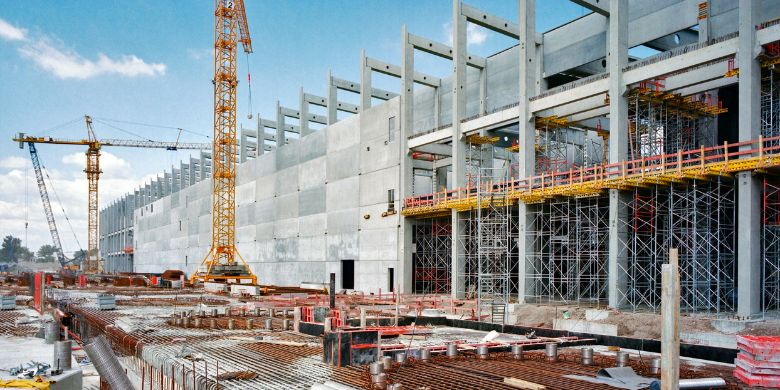
Discussion on Division 06 – Wood, Plastics, and Composites, and its Importance in Construction Projects
Division 06 – Wood, Plastics, and Composites, plays a significant role within the construction industry, as these materials are widely utilized in various applications. This division covers all aspects of these materials, from their selection and specification to their installation and maintenance. Understanding Division 06 is essential for construction professionals as it enables them to choose the most suitable materials, products, and systems, optimizing project outcomes.
Overview of the Various Subcategories within Division 06
Division 06 is organized into multiple subcategories to facilitate a more in-depth understanding of the materials and their applications. These subcategories include:
- 06 10 00: Rough Carpentry
- 06 20 00: Finish Carpentry
- 06 40 00: Architectural Woodwork
- 06 50 00: Structural Plastics
- 06 60 00: Plastic Fabrications
- 06 70 00: Structural Composites
- 06 80 00: Composite Fabrications
Each of these subcategories provides further details on the materials, products, and systems that construction professionals need to consider when working on projects involving Division 06 materials. As we move forward through this blog series, we will delve deeper into each of these subcategories and explore the various materials, products, and systems associated with Division 06.
This comprehensive coverage will equip construction professionals with the knowledge needed to select, specify, install, and maintain Wood, Plastics, and Composites effectively in their projects. So, stay tuned for the next section, where we will discuss the nuances of each material type in detail!
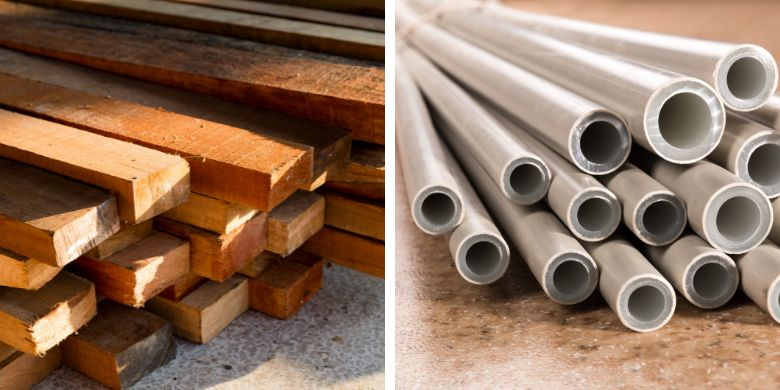
Division 06 – Materials: Wood, Plastics, and Composites
In this section, we will delve into the different types of materials found in Division 06 – Wood, Plastics, and Composites, exploring their characteristics and how they are utilized in construction projects.
1. Wood Materials
Wood has been used for ages in the construction industry for its versatility, durability, and aesthetic appeal. Common types of wood used in construction include:
- Softwoods (e.g., Pine, Fir, and Spruce) are generally used for framing, sheathing, and other structural applications.
- Hardwoods (e.g., Oak, Maple, and Cherry) are often used for flooring, cabinetry, and other interior finishes. The advantages of wood materials include their natural beauty, biodegradability, and renewability. However, some disadvantages encompass their susceptibility to termites, decay, and moisture, as well as potential deforestation concerns.
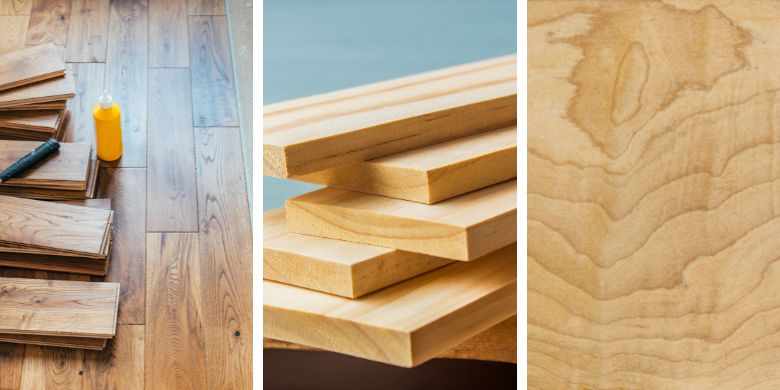
2. Plastic Materials
Plastics have become increasingly popular in the construction industry due to their lightweight, durability, and low maintenance requirements. Some of the widely used plastic materials in construction are:
- Polyvinyl Chloride (PVC): Used for piping, window frames, and siding.
- Polyethylene (PE): Applied in vapor barriers, insulation, and geomembranes.
- Polystyrene (PS): Commonly found in insulation foams and cladding panels. The main advantages of using plastics in construction projects are their resistance to degradation, moisture, and pests, along with their insulating properties. However, the disadvantages consist of potential environmental concerns, such as their non-biodegradability and the release of toxic fumes when burned.
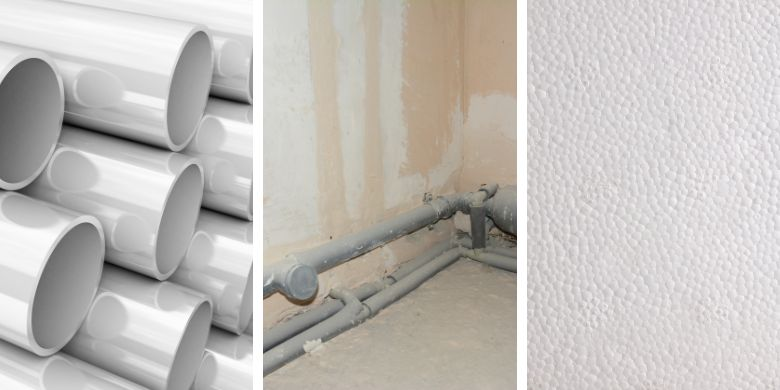
3. Composite Materials
Composite materials are made by combining two or more materials with differing properties, resulting in a new material with improved characteristics. Some key composite materials used in construction include:
- Fiber-Reinforced Polymer (FRP): A composite material composed of a polymer matrix reinforced with fibers (e.g., glass, carbon, or aramid). FRP is employed in structural members, cladding panels, and railings.
- Engineered Wood Products (EWP): These are made by bonding wood fibers, strands, or veneers with adhesives. Popular EWP products include plywood, oriented strand board (OSB), and laminated veneer lumber (LVL).

The advantages of composite materials include their high strength-to-weight ratio, resistance to rot and corrosion, and reduced maintenance requirements. However, their disadvantages may involve higher initial costs and the need for specialized installation techniques.
In conclusion, Division 06 materials have a wide range of applications in construction projects. Each material type offers its unique advantages and disadvantages. Understanding these characteristics and selecting the appropriate material for the specific project requirements will contribute to the overall success of the construction project. In the following sections, we will discuss the process of selecting and specifying Division 06 products, as well as installation, detailing, and maintenance techniques to optimize the use of these materials.
Division 06 – Product Selection and Specification
In this section, we will discuss the process of selecting and specifying Division 06 products for a construction project. From understanding the factors to consider when selecting products to drafting product specifications, we will provide key insights and guidelines that will help you make informed decisions during your construction project.
1. Factors to Consider When Selecting Division 06 Products
Selecting appropriate Division 06 products for a specific project is crucial for achieving the desired outcome. The following factors should be considered while selecting Wood, Plastics, and Composites for a project:
- Performance requirements: Consider the structural, thermal, and moisture performance requirements for the project. Each material has different performance attributes, so choose materials that meet or exceed the project’s needs.
- Aesthetics: The visual appearance of the materials is important, especially for projects where the final appearance is one of the main focus points. Choose materials with the desired color, texture, and finish.
- Durability: Select materials that are long-lasting and able to withstand the environmental conditions at the project site.
- Availability: Ensure that the chosen materials are readily available and can be procured within the project’s timeframe.
- Cost: Evaluate the cost implications of the selected materials, including their initial purchase cost, installation costs, and long-term maintenance costs.
2. Guidelines for Product Specification
When specifying Division 06 products, consider the following guidelines:
- Material properties: Clearly state the desired physical, mechanical, and chemical properties of the materials, such as density, strength, stiffness, and resistance to moisture, fire, and chemicals.
- Performance criteria: Define the performance criteria for the materials, including load-carrying capacity, thermal insulation, and moisture resistance.
- Installation requirements: Specify the required installation methods, tools, and equipment, as well as any necessary tests or inspections to ensure proper installation.
- Industry standards: Adhere to relevant industry standards and regulations, such as ASTM International, International Code Council (ICC), and National Fire Protection Association (NFPA).
3. Importance of Sustainable Material Selection
Sustainable material selection is crucial due to its environmental and long-term cost benefits. When selecting Division 06 materials, consider the following sustainability aspects:
- Resource efficiency: Choose materials that are resource-efficient, such as those made from recycled content or renewable sources.
- Energy efficiency: Opt for materials with high insulation values and low thermal conductivity to reduce energy consumption.
- End-of-life disposal: Consider the disposal or recycling options for the materials at the end of their service life.
- Environmental certifications: Select materials that are certified by credible third-party organizations, such as the Forest Stewardship Council (FSC) for wood products or the GreenGuard Environmental Institute for low-emitting materials.
4. Examples of Drafting Division 06 Product Specifications
When drafting Division 06 product specifications, consult industry standards and guidelines, including the CSI MasterFormat, the American Institute of Architects (AIA) guidelines, and the American Society for Testing and Materials (ASTM) standards. These guidelines provide comprehensive information on product specifications and ensure that your project adheres to the highest standards.
In conclusion, selecting and specifying Division 06 materials is essential for the success of a construction project. By considering factors such as performance requirements, aesthetics, and sustainability, you can make informed decisions that lead to more robust, efficient, and visually appealing buildings.
Division 06 – Installation and Detailing Techniques
In this section, we will explore the various installation and detailing techniques for Division 06 materials, products, and systems. Our goal is to provide valuable insights and best practices for construction professionals working with Wood, Plastics, and Composites. Let’s dive in!
1. Best practices for the installation of Division 06 materials
Installing Division 06 materials requires careful planning, precise measurement, and the use of proper tools and equipment. Here are some best practices to ensure successful installation:
- Wood materials: For a solid and dependable installation, it is crucial to select the right wood species and type, follow proper moisture management guidelines, and adhere to the manufacturer’s recommendations for fasteners and adhesives. When installing wood framing, ensure that the spacing between members is in accordance with local building codes and industry standards.
- Plastic materials: The installation of plastic materials, such as PVC and HDPE, requires the use of proper cutting tools, fusion welding, or solvent cementing techniques, depending on the type of material and its intended application. Ensure that the joining method is compatible with the specific plastic material and follow the manufacturer’s guidelines.
- Composite materials: Installing composite materials, such as fiber-reinforced polymers, involves careful consideration of the ideal panel size, layout, and orientation. Proper guidelines should be followed for cutting, drilling, and fastening, in addition to providing sufficient expansion gaps for thermal movement.
2. Detailing techniques for joining, fastening, and sealing Division 06 materials
To achieve a professional and durable finish, it is crucial to employ effective detailing techniques when working with Division 06 materials:
- Joinery: Employ woodworking joinery techniques, such as mortise-and-tenon, dovetail, and dado joints, for a strong and aesthetically pleasing connection between wood components. For plastics and composites, consider using mechanical fasteners, fusion welding, or specialized adhesives as recommended by the manufacturer.
- Fastening: Utilize appropriate fasteners, such as nails, screws, and bolts, to secure Division 06 materials in place. It is vital to select corrosion-resistant fasteners, especially for exterior applications, to prevent premature degradation of the material and the fastener itself.
- Sealing: Properly seal all joints and connections in Division 06 materials to prevent water intrusion, air infiltration, and thermal loss. Use recommended sealants and gaskets for each material type, ensuring compatibility and long-term performance.
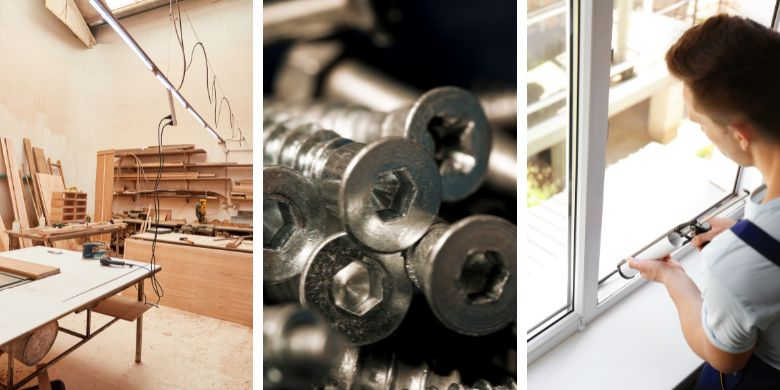
3. Quality control measures and inspections during the installation process
Implementing strict quality control measures and inspections during the installation process is fundamental for achieving a high-quality finish and ensuring structural integrity:
- Visual inspections: Regularly inspect all Division 06 materials for surface defects, dimensional accuracy, and alignment throughout the installation process. Address any discrepancies immediately to prevent long-term issues and maintain aesthetic consistency.
- Structural inspections: Conduct periodic structural inspections to verify that all components meet the required load-bearing capacity and ensure that connections are properly fastened.
- Performance tests: Perform performance tests, such as air infiltration and water penetration tests, on installed materials to validate their effectiveness and identify any potential issues.
4. Common challenges and solutions when working with Division 06 materials
Working with Division 06 materials can present a variety of challenges, but with experience and knowledge, these can be overcome:
- Dimensional instability: Wood materials are prone to shrinkage, expansion, and warping due to moisture changes. To minimize these issues, ensure proper moisture management during installation and maintain optimal indoor humidity levels.
- Thermal expansion: Plastic and composite materials can expand and contract significantly due to temperature fluctuations. To address this issue, provide adequate thermal expansion gaps and use appropriate fastening techniques to allow for movement.
- Durability concerns: Protect Division 06 materials from physical damage, UV degradation, and insect infestation by specifying suitable material types, finishes, and protective treatments as required.
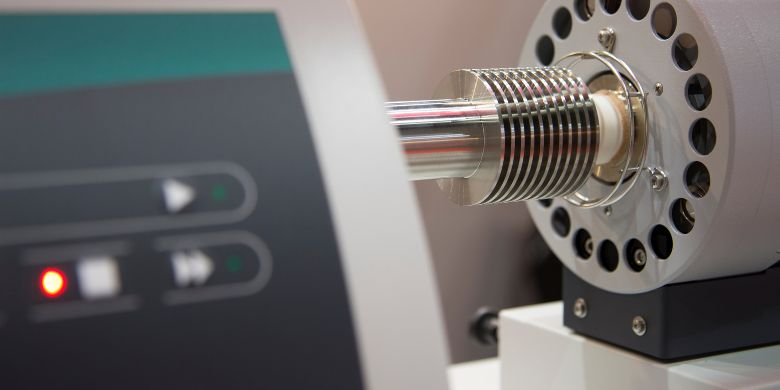
By implementing these installation and detailing techniques, construction professionals can ensure that their Division 06 materials are installed correctly, providing outstanding performance and a long-lasting, visually striking finish.
Division 06 – Maintenance and Repair
As an expert in construction specification, it’s essential to consider the long-term care and repair requirements for Division 06 materials, including wood, plastics, and composites.
In this section of our blog, we will delve into maintenance recommendations, prevention and mitigation techniques, specific repair methods, and long-term maintenance planning and considerations for projects involving Division 06 materials.
1. Routine maintenance recommendations for Wood, Plastics, and Composites in construction projects
Wood: To maintain the integrity and appearance of wood materials, regular cleaning, sealing, staining, and painting is often necessary. Additionally, it’s essential to monitor wood for signs of moisture damage, rot, and insect infestation to address these issues promptly.
Plastics: Plastics generally require low maintenance efforts. However, it’s essential to regularly clean plastic materials to prevent staining and UV degradation. Moreover, it is crucial to inspect plastic materials for any cracks or damages due to temperature changes or impact.
Composites: Composite materials typically provide low-maintenance solutions compared to traditional wood products. However, periodic cleaning and inspection for signs of wear, fading, or staining is recommended to ensure their longevity and performance.
2. Prevention and mitigation techniques for common issues affecting Division 06 materials
Wood: To prevent moisture damage, ensure proper ventilation and installation of moisture barrier systems. Applying fungicides or insecticides can also help prevent rot and insect infestations in wood materials. Proper flashing details at junctions are crucial to avoid water infiltration.
Plastics: UV-resistant coatings or additives can be used to prevent degradation caused by sunlight. Expansion joints and proper installation techniques can help mitigate issues related to temperature variations.
Composites: Selecting high-quality composite materials with advanced manufacturing technologies can reduce common issues such as staining, fading, and scratching. Proper installation and allowing for expansion and contraction can also prevent long-term issues.
3. Repair methods and guidelines for addressing damage or deterioration of Division 06 materials
Wood: Damaged or deteriorated wood components should be replaced with matching materials. Minor damages, such as scratches or dents, can often be repaired with wood filler and refinishing.
Plastics: Damaged plastic materials can sometimes be repaired using adhesives or welding techniques. However, in some cases, replacement may be necessary.
Composites: Composite materials can often be repaired using manufacturer-specific repair materials or kits. In some instances, replacement of damaged boards or panels may be required.
4. Long-term maintenance planning and considerations for projects involving Division 06 materials
When planning construction projects involving Division 06 materials, it’s essential to consider the lifecycle costs of maintenance, repairs, and replacements. Selecting high-quality materials with low-maintenance requirements and long-term durability can lead to significant savings over time.
Additionally, incorporating proper installation techniques, detailing, and moisture management systems can help prevent long-term issues and extend the lifespan of Division 06 materials. Regular inspections and prompt repairs will ensure that any potential problems are addressed before they become more severe.
In conclusion, understanding the maintenance and repair requirements of Division 06 materials is vital for ensuring their long-lasting performance in construction projects. By implementing regular maintenance practices, preventing common issues, and utilizing proper repair methods, you can maximize the lifespan and durability of wood, plastics, and composite materials in your projects.
Have Questions?
Get in touch with our team to learn more about what Swiftlane can do for you.

